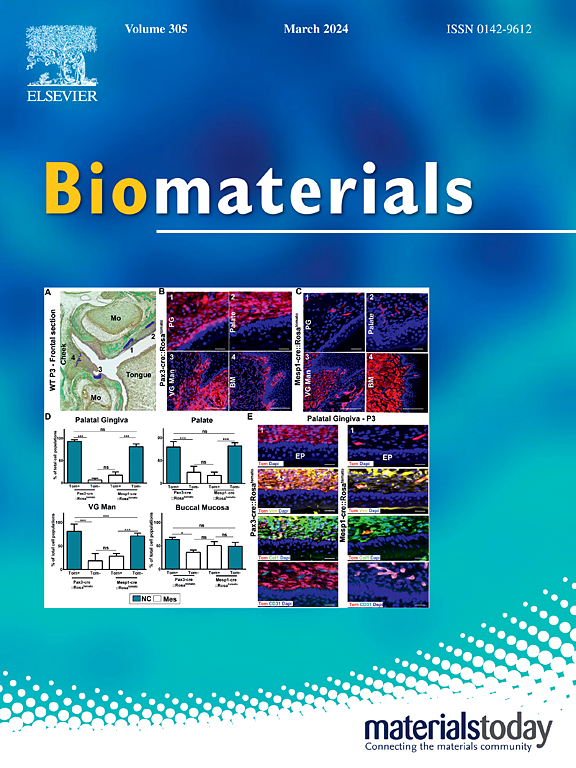Multi-dimensional donor engineering of NIR-II AIEgens for multimodal phototheranostics of orthotopic breast cancer
IF 12.8
1区 医学
Q1 ENGINEERING, BIOMEDICAL
引用次数: 0
Abstract
“One-for-all” multimodal phototheranostic agents, which integrate multiple photodiagnostic and phototherapeutic functionalities into a single component, have emerged as promising platforms for advancing cancer treatment. Among these, agents featuring second near-infrared (NIR-II) emission are particularly appealing due to their superior tissue penetration depth and high signal-to-background ratio (SBR). However, most reported NIR-II fluorophores suffer from severely imbalanced radiative and non-radiative excited-state energy dissipation in biological environments, resulting in extremely low fluorescence quantum yields (QYs) and limited diagnostic efficacy. This highlights the urgent need for innovative molecular design strategies to develop high-performance NIR-II “one-for-all” multimodal phototheranostic agents. Herein, we present, for the first time, a multi-dimensional donor engineering protocol that optimizes donor design at the molecular, aggregated, and solvent-interaction levels. By introducing 2,4,4-trimethylpentan-2-yl groups into the diphenylamine indeno[1,2-b]thiophene donor unit, we developed a donor-acceptor-donor (D-A-D) type NIR-II aggregation-induced emission-active luminogen (AIEgen), i.e. OPITBT. When formulated into nanoparticles (NPs), OPITBT NPs exhibited a 16-fold enhancement in fluorescence QY compared to OPITBT in tetrahydrofuran, along with excellent photothermal conversion efficiency (PCE) and acceptable type-I reactive oxygen species (ROS) generation. When further fabricated into tumor-targeting NPs, the resulted OPITBT-R NPs effectively eliminated orthotopic breast cancer through fluorescence-photoacoustic-photothermal multimodal imaging-guided photodynamic-photothermal synergistic therapy under single 808 nm laser irradiation. Notably, the exceptional NIR-II fluorescence brightness of OPITBT-R NPs enables high-resolution NIR-IIb whole-body vascular imaging in living mice. This work provides a versatile strategy to enhance radiative dissipation of NIR-II fluorophores for balanced phototheranostic performance and advances the development of “one-for-all” phototheranostic systems.

求助全文
约1分钟内获得全文
求助全文
来源期刊

Biomaterials
工程技术-材料科学:生物材料
CiteScore
26.00
自引率
2.90%
发文量
565
审稿时长
46 days
期刊介绍:
Biomaterials is an international journal covering the science and clinical application of biomaterials. A biomaterial is now defined as a substance that has been engineered to take a form which, alone or as part of a complex system, is used to direct, by control of interactions with components of living systems, the course of any therapeutic or diagnostic procedure. It is the aim of the journal to provide a peer-reviewed forum for the publication of original papers and authoritative review and opinion papers dealing with the most important issues facing the use of biomaterials in clinical practice. The scope of the journal covers the wide range of physical, biological and chemical sciences that underpin the design of biomaterials and the clinical disciplines in which they are used. These sciences include polymer synthesis and characterization, drug and gene vector design, the biology of the host response, immunology and toxicology and self assembly at the nanoscale. Clinical applications include the therapies of medical technology and regenerative medicine in all clinical disciplines, and diagnostic systems that reply on innovative contrast and sensing agents. The journal is relevant to areas such as cancer diagnosis and therapy, implantable devices, drug delivery systems, gene vectors, bionanotechnology and tissue engineering.
 求助内容:
求助内容: 应助结果提醒方式:
应助结果提醒方式:


